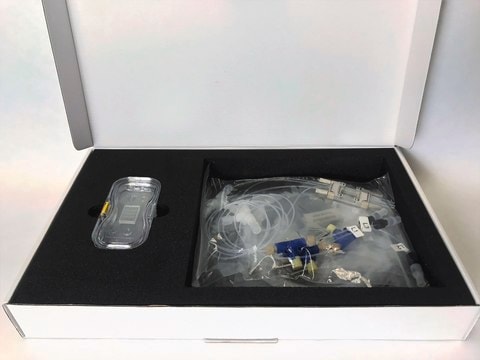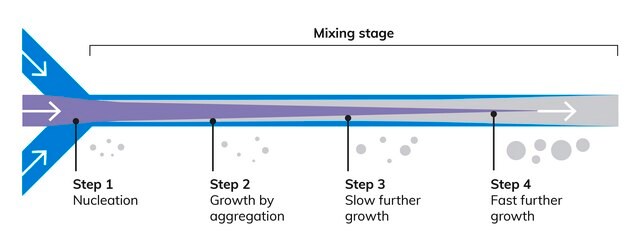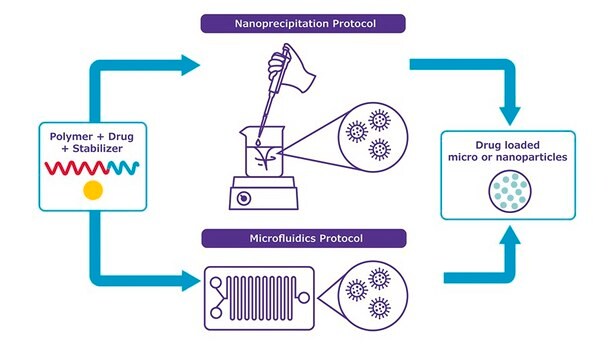917737
NanoFabTx™ materials screening kit
for synthesis of polymeric nanoparticles
Sinónimos:
Non-PEGylated drug delivery formulation, PCL, PLA, PLGA
About This Item
Productos recomendados
description
Kit components :
PLGA-Nano (907782-500mg)
PLGA-Nano75 (916382-500mg)
PLA-Nano (910996-500mg)
PCL-Nano (916382-500mg)
Stabilizer - P (913448-10g)
Quality Level
application(s)
advanced drug delivery
General description
Application
Features and Benefits
- Ready-to-use polymer drug formulation screening kit for non-PEGylated nanoparticles
- Choose from either nanopreciptiation or microfluidics-based protocols
- Create specifically sized, biodegradable, PLGA, PLA, or PCL nanoparticles
- Maximize the encapsulation of hydrophobic drugs
- Four different non-PEGylated polymers are included
Preparation Note
- A nanoprecipitation protocol to prepare drug-encapsulated nanoparticles in standard laboratory glassware.
- A microfluidics protocol using commercial platforms or syringe pumps.
The microfluidics protocol uses NanoFabTx™ device kits (911593), which provide the microfluidics chips, fittings, and tubing required to get started with microfluidics-based synthesis (compatible microfluidics system or syringe pump required).
For more information, please refer to the protocol under the document section of this page.
Legal Information
Storage Class
11 - Combustible Solids
wgk_germany
WGK 3
Elija entre una de las versiones más recientes:
Certificados de análisis (COA)
Lo sentimos, en este momento no disponemos de COAs para este producto en línea.
Si necesita más asistencia, póngase en contacto con Atención al cliente
¿Ya tiene este producto?
Encuentre la documentación para los productos que ha comprado recientemente en la Biblioteca de documentos.
Nuestro equipo de científicos tiene experiencia en todas las áreas de investigación: Ciencias de la vida, Ciencia de los materiales, Síntesis química, Cromatografía, Analítica y muchas otras.
Póngase en contacto con el Servicio técnico



